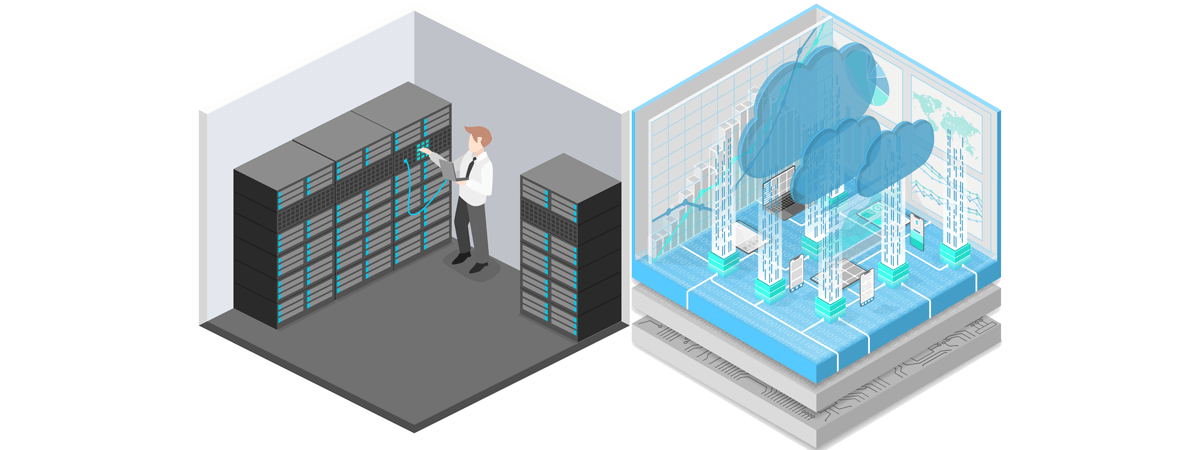SaaS Hosting 101
At Webapper, we help clients build and host their web applications. Over the past 20 years, we’ve been a part of the evolution and adoption of Software as a Service (SaaS) in a variety of industries, from automotive to healthcare to finance. Before we started with SaaS, we build many corporate web applications that ran in local networks and on websites. Our business has evolved with cloud computing, migrating those simple apps to enterprise solutions that run in public, private, and hybrid cloud environments. So being ‘grey beards’ in this space, we’ve been through it all, and that’s why we wanted to share our knowledge of SaaS, in the form of SaaS Hosting 101. Class is in…
What is SaaS?
Software as a Service (SaaS) is on-demand software, typically available over the public internet. As such, SaaS is also known as “web-based software” or “on-demand software.” Traditional “old skool” software requires users to purchase and install software on their own computers. With SaaS, users access software remotely, with little or no installation of anything required. SaaS providers typically charge a monthly or annual subscription fee.
SaaS products started to become widely available in the 1990’s when the explosion of the internet enabled software to be hosted centrally and distributed across the web to satisfy the demands of a global audience. Some of the most popular modern applications use a SaaS model:
Products like Slack offer browser-based or downloadable apps, with all the functionality delivered to the user via application programming interfaces (APIs) and data stored outside with the provider. Note, SaaS is a subset of cloud computing, but not all SaaS models are built in the cloud.
What is SaaS Hosting?
In SaaS hosting, your company’s applications reside on dedicated or virtual servers that run the apps. Customers (or users) access the software via the internet. As mentioned, it could be a local client specifically built for the software or it could require using a browser. With SaaS hosting, the software is maintained and updated on the server, eliminating the hassle for end users updating the software themselves.
SaaS Cloud Hosting
You may wonder if using the cloud or an in-house data center is best for your SaaS application. Data center hosting refers to on-premise hardware, and the cloud refers to off-premise infrastructure. Simply stated, the opposite of SaaS is self-hosted, and the opposite of public cloud is on-premise.
You will find a number of reasons for consideration of migrating your SaaS applications to the cloud, focusing on agility, scalability, and efficiency.
1. You can deliver a better customer experience (CX).
Speed and agility go hand-in-hand with delivering good CX. In the cloud, resources can be allocated on demand to ensure optimal performance, keeping users’ demands satisfied around the clock. Redundancy prevents data loss and outages. In addition, there’s no need for lengthy installations. With everything in the cloud, users don’t have to deal with drivers and updates.
2. You can expand your reach.
If your company develops software, SaaS hosting can enable new business opportunities. Using the cloud, you can enable global access.
3. You can circumvent current infrastructure limitations.
On-premise solutions clearly have limitations. You get what you already paid for. That limits scalability to your (capital expense) budget. Your hardware ages, you have to manage it (and that can be complicated), and you battle compatibility issues. In the cloud, the hardware headaches are nowhere near the same.
4. You can achieve lower overhead costs.
On-premise hardware is expensive to buy, manage, and maintain, consuming budget that could be directed to core operations. Expenses for an in-house data center include cost of the space needed for the hardware, maintenance costs, power costs, and salaries of IT staff. With cloud infrastructure, you pay only for what you need. In general, cloud SaaS hosting can often increase ROI overall, as there are lower costs associated with deploying and maintaining the applications. It’s amazing how efficient and powerful SaaS can be when you optimize your workloads. Further, SaaS minimizes the costs related to IT support as the provider is responsible for many issues that would normally fall on IT’s shoulders.
5. You can make your business more agile.
SaaS applications have a faster installation time and you don’t have to worry about as many challenges in future deployments. CI/CD workflows enable faster deployment of patches and updates.
Getting Started with Cloud SaaS Hosting
Migrating your SaaS applications to (or within) the cloud can be challenging. It’s advisable to leverage cloud infrastructure expertise. We’ve prepared some helpful tools for folks at the crossroads, and we encourage you to check them out (see below).


Leave A Comment